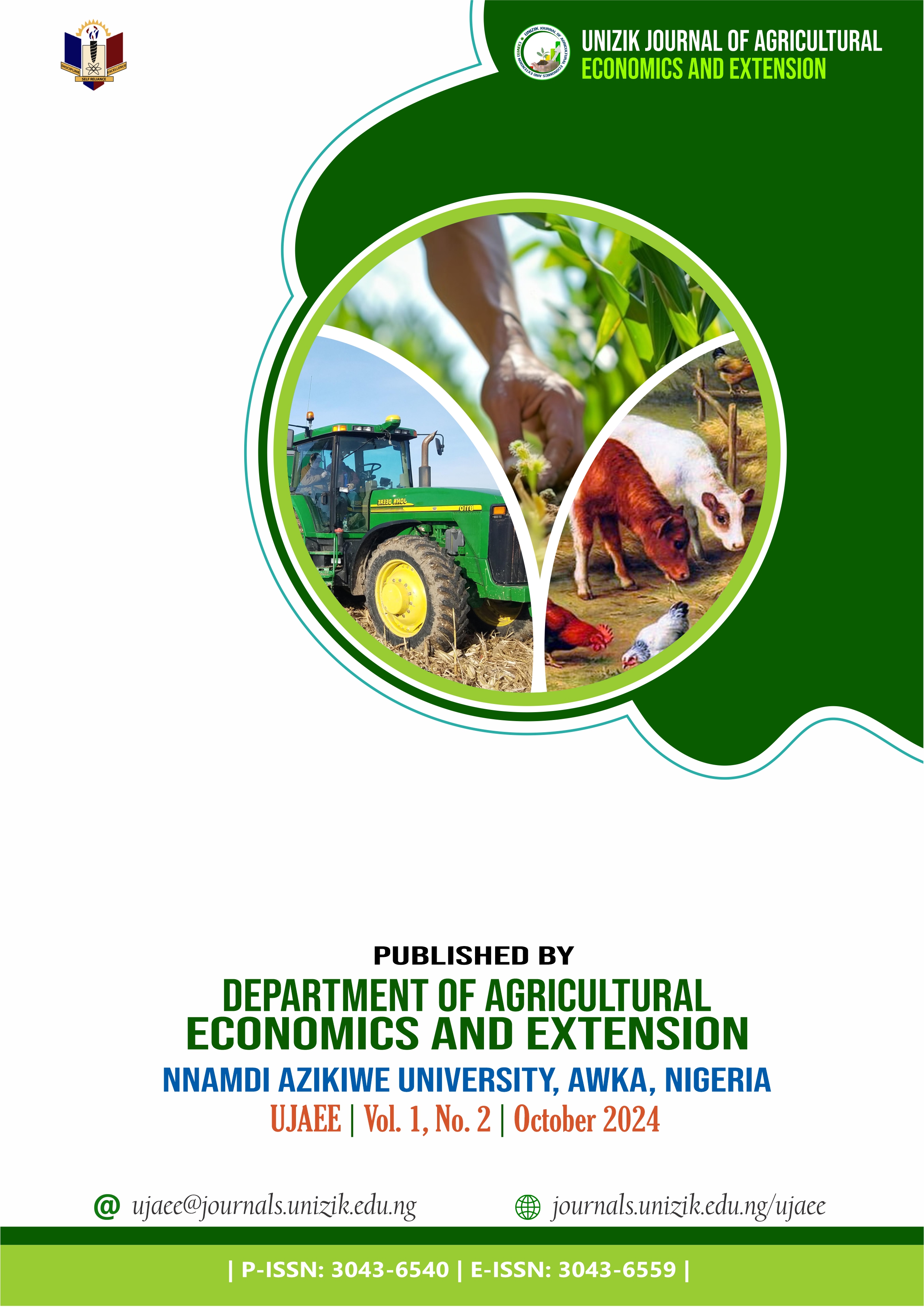Female Headed Households’ Coping Strategies for Food Insecurity in Ivo Local Government Area of Ebonyi State, Nigeria
Keywords:
Coping Strategies, Female, Food, Insecurity, HouseholdsAbstract
The study focused on the analysis of food insecurity and coping strategies among female headed households in Ivo Local Government Area of Ebonyi state, Nigeria with the specific objectives to; describe socio-economic characteristics; assess food insecurity; identify coping strategies adopted; determine the factors influencing food security and identify contributing factors to food insecurity. A Purposive and multistage random sampling technique was used to select eighty (80) female-headed farm households. The result showed that 36.25% belong to the age bracket of 25-34 years with household size of 1-5 persons. The result also showed that 28.75% of the respondents were single while a good proportion (75.25%) were into farming as most of them had farming experience of 1-15 years. Result on the food insecurity showed that 96.25% were concerned about what to eat, 78.75% ration their meals and eat the same food repeatedly, 76.25% go to bed hungry and 48.75% eat food they do not like. Coping strategies showed that 26.25% of respondents eat smaller rations (portions) of food while 18.75% of the respondents’ resort to consumption of cheaper alternatives of food. Probit analysis showed that household size, marital status, level of education, access to credit facilities and land ownership were the factors that influence food security status of respondents. The factors that contribute to food insecurity among female headed household showed that 91.25% of the respondents affirm that farmer/herders clash is the major factor influencing incidence of food insecurity. The study thereby recommends that government policies should be enacted to protect the female headed households from food insecurity, discrimination and segregation towards females should be tackled in areas of land tenure and education.
Downloads
Published
Issue
Section
License
Copyright (c) 2024 UNIZIK Journal of Agricultural Economics and Extension

This work is licensed under a Creative Commons Attribution-NonCommercial-NoDerivatives 4.0 International License.




